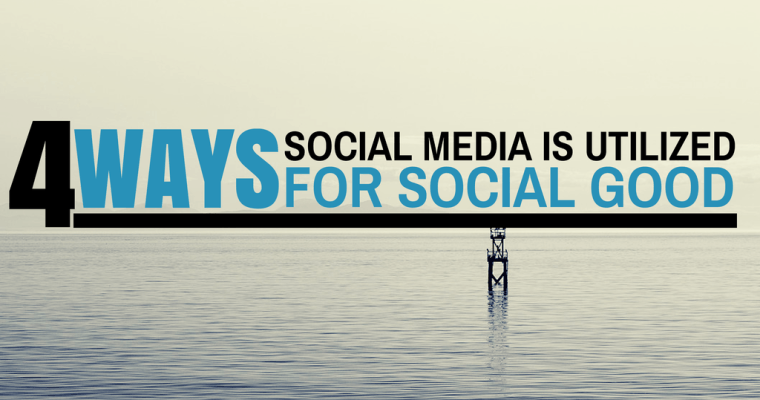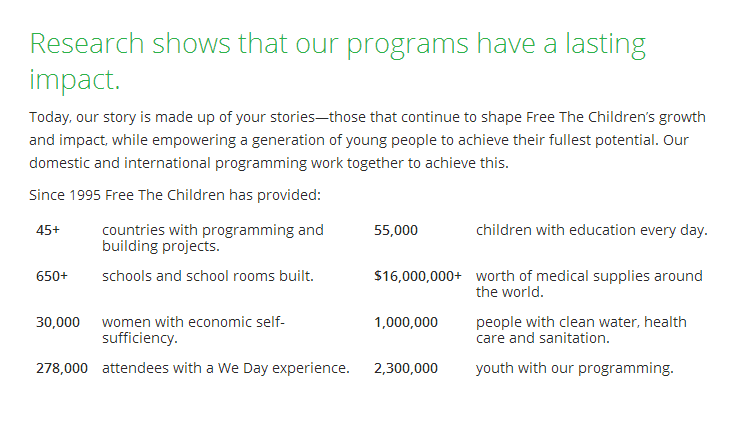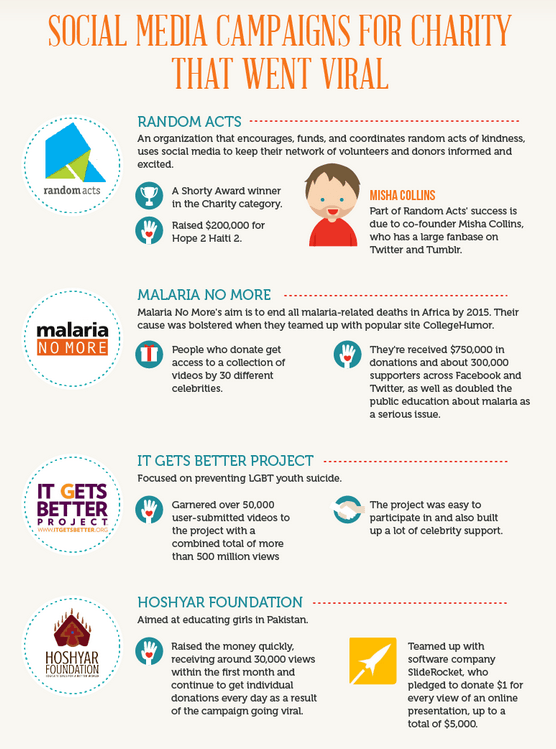

Over the last few years, social media has had a huge impact in our everyday lives. It has completely changed the way we engage the world, both locally and internationally.
However, much of what is showcased focuses on the negative aspects of social media, such as people using it as a place to vent or rant or as place for cyberbullying. Despite our nature to focus on the more negative moments in social media, there are still many people using social media outlets to do great things in our world.
From the nonprofit, for-profit, and even ordinary individuals, here are four examples of how social media is being utilized for social good.
Groups For Revolutionary Action
In 2011, social media played a very significant role during the Arab Spring revolutions in Egypt, where people came together and found support in their common desire for change. After 18 days of protest, the president of Egypt, who was disfavored for rising commodity prices and suppressing freedom and media, gave up his long-time presidency.
Social media sped up the process by helping organize the revolution’s efforts. Facebook in particular played an important role by helping pro-democrats to organize protests. One example is a Facebook community ran by activistWhel Ghonim, who delivered protest messages through Facebook updates, images, photos, and even through Facebook notes. The community has grown to more than 1 million followers to date.

“Social media have become the pamphlets of the 21st century, a way that people who are frustrated with the status quo can organize themselves and coordinate protest, and in the case of Egypt, revolution.” – Wired.com
Twitter was also very influential in helping the revolution. With hundreds of thousands of tweets throughout the protests, they helped share the Egyptians’ fight for independence with the rest of the world. This led to support and assistance, which ultimately led to Mumbarak’s stepping down.
For Charity and Charitable Organizations
Social media has also been used by nonprofit organizations all over the world to seek help and gain visibility for their causes.
For instance, one group called Child’s Play, known for helping children confined in hospitals to keep their spirits up through toys and video games, uses social media to organize events all over the world that raise thousands of dollars for kids.


Their huge followings on Facebook and Twitter helped them connect with gamers and sponsors globally, which helped them raised $7,600,000 in contributions.
Another youth based organization called Free the Children also relies heavily on social media to spread their stories and increase awareness.

Through powerful content spread across their social media channels, the organization is able to inspire their audience to take action and support their cause.

There are a ton of other organizations that have taken to social media to make the world a better place — one share and one vote at a time. Here’s an infographic showcasing some successful campaigns for charity that went viral on social media.

“From Facebook posts to Twitter feeds, charities are embracing social media as a tool to find, engage and keep donors long after the first check is written. Donors also are taking to social networks to find and share information about charities they deem worthy.” – Emily Glazer, WSJ.com
Natural Disasters
Social media has been proven to be an extremely helpful tool during emergencies by getting vital news out quickly, announcing the immediate needs of people and locations, as well as organizing and deploying rescue missions.
For instance, during the record-breaking Serbian floods that devastated the Balkans in May 2014, social media was instrumental in helping with their relief efforts.
While the government of Serbia appealed to both citizens and businesses to donate food and clothes, Twitter users launched a special website calledpoplave.rs, which contained a map of the flood zone and the distribution efforts, along with a forum section where people could report information.
Messages of support also poured in across Twitter, with hashtags #poplave and #SerbiaFloods.
The same happened when Typhoon Haiyan hit the Philippines back in November 2013, slamming much of the province of Leyte and the surrounding areas with incredibly powerful winds. Many towns were rendered lawless leaving survivors desperate for help. The disaster was so bad, it drew comparisons to the aftermath of Hurricane Katrina in the United States back in 2005.
The difference, however, was that social media was there to help during Typhoon Haiyan, showing the rest of the world what was happening, which lead to assistance coming in droves, both foreign and domestic.
Even governments started to recognize the power of social media and its potential, with US President Barack Obama noting the role of the social media while praising Egyptians who stood up for their rights:The massive flood lasted nearly a week and resulted in 80 fatalities and affected the lives of over 1.6 million citizens. Even now, the reported cost of the damages from the flood are up to several billions, which may exceed the cost of the entire Bosnian War from 20 years ago.“We saw a new generation emerge — a generation that uses their own creativity and talent and technology to call for a government that represented their hopes and not their fears; a government that is responsive to their boundless aspirations.”
[“source-searchenginejournal”]

